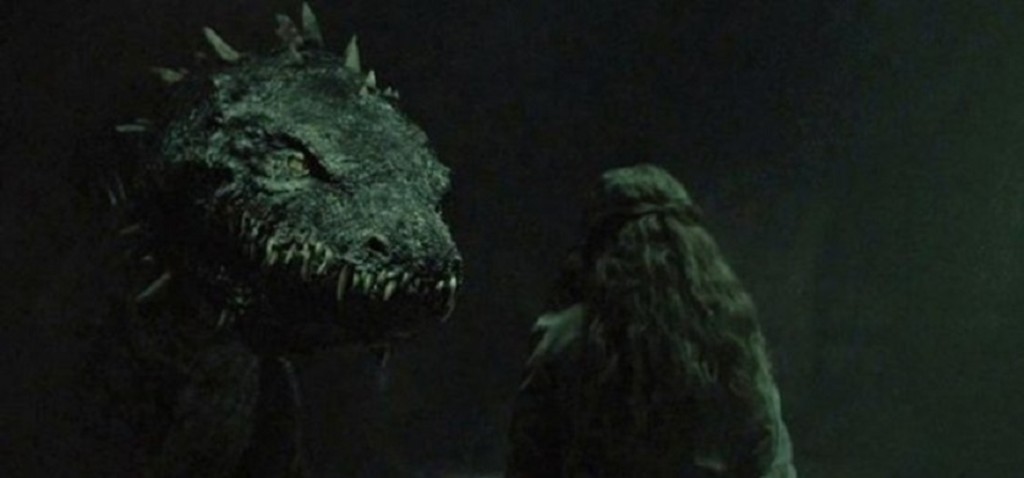By Chlotrudis Independent Film Society
Rating: 3.75 cats
Director: Kenneth Kainz
Starring: Allan Hyde | Jakob Oftebro | Laura Bro | Maria Bonnevie | Rebecca Emily Sattrup | Søren Malling

Original language title: Skammerens Datter
Country: denmark
Year: 2015
Running time: 96
IMDB: http://www.imdb.com/title/tt3022458
Jason says: “The concept behind Lene Kaaberbøl’s Shamer Chronicles book series is an interesting one, positing a woman and her daughter with the ability to look into a person’s soul and pull out what they are ashamed of. What kinds of problems can you solve with weaponized guilt? How does that play in a situation where people can do horrible things without feeling shame? At the very least, it makes for a tale of swords and (some) sorcery that’s different enough to be interesting.
“Of course, people don’t really like Shamers, forcing Melussina (Maria Bonnevie) and her similarly-gifted daughter Dina (Rebecca Emilie Sattrup) to live on the outskirts of their village and are often taunted as witches. But when the king and queen of the kingdom Dunark are murdered and Crown Prince Nicodemus (Jakob Oftebro) stands accused, Mesire Drakhan (Peter Plaugborg), his Weapons Master (Søren Malling), and the rest of the court need to be really sure, sending for Melussina and, later, Dina. When somebody doesn’t like the answers the Shamers give, Melussina is scheduled for public execution – which, in Dunark, involves the dragons kept in the dungeon – and Dina winds up on the run, with few allies beyond street girl Rosa (Petra Maria Scott) to help free her mother and bring the king’s killer to justice.
“As clever as the premise Kaaberbøl came up with (and Anders Thomas Jensen adapted for director Kenneth Kainz), the film version of The Shamer’s Daughter, at least, can’t help but expose its weakness, especially around the climax, as in a medieval setting where the Shamers can be easily ignored or executed as traitors. It backs itself into a pretty bad corner, especially when one considers that it’s presumably trying to tell its young-adult audience that the gifts for which they’re taunted make them powerful and that living life without reason for shame is the best path. That doesn’t set up a sequel very well, though.
“It does still make for a nifty fantasy lark, though. Dina’s ability to see and manipulate shame offers different ways to solve problems than this sort of film typically offers, and screenwriter Jensen must have had fun with the idea that appealing to a character’s better nature can be a really tangible thing here. Of course, not all problems can be solved with guilt, so there’s a fair amount of swashbuckling and derring-do, with dragons to be evaded in the dungeon, and the chance for both swordfights and a bit of mad science. Dunark is located in a fairly grounded fantasy world aside; its dragons are the real-world Komodo variety, albeit bigger than lions, and where other series would have wizards, this has a pharmacist (Laura Bro) and a chemist (Olaf Johannessen) who might be said to dabble in alchemy.
“Mainly, though, it’s got Dina, with Rebecca Emilie Sattrup getting to play the heroine as a fairly modern teenager in terms of attitude without feeling like an actual anachronism. Sattrup presents Dina as having a bit of a chip on her shoulder, probably from regularly peering into the dark sides of those around her as much as being ostracized, but she doesn’t overplay it enough to make the character grating, and while a greater amount of self-confidence arrives at an odd time, Sattrup and Kainz make it part and parcel of her becoming more active and less likely to be surprised by the wonders and dangers of the capital. The group around her is nice as well, with Jakob Oftebro and Peter Plaugborg doing good work in making Nicodemus and Drakhan opposites in attitude without either being particularly one-note or necessarily announcing himself as hero or villain on his first appearance, while Petra Maria Scott and Olaf Johannessen make entertaining allies and Søren Malling a potentially formidable force
(how Malling shows his character reacting to the emotional impact of a shaming is quietly impressive).
“Though THE SHAMER’S DAUGHTER is primarily Danish, it shot all around Europe to piece together castles, medieval city streets, and the like, and looks quite nice if not overdone in that regard. The visual effects crew makes themselves most obviously known with the dragons, who are great creatures – despite being mostly CGI, they look heavy and thus more dangerous, even if they are grounded. There’s excitement in seeing them, too, so they fit into what is a fairly thrilling, family adventure. There are jokes cracked, nifty locations found and created, and a fair chunk of action (including chances for Drakhan and Nicodemus to draw swords on each other) that may not be quite bloodless but shouldn’t be traumatizing.
“Sword & sorcery isn’t really my genre, and I can mostly take and leave young-adult material, so I didn’t love THE SHAMER’S DAUGHTER as much as the targeted audience likely will. Wouldn’t have minded a more definitive ending, either, as this one seems almost contradictory, like they would have cut it different ways depending how a sequel’s prospects looked. What it’s trying to do is executed pretty well with a nice cast, though, so I expect that it will appeal to more than just fans of the books and genre. 3.75 cats
“Seen 18 July 2015 in Theatre Hall Concordia (Fantasia International Film Festival, DCP)”
